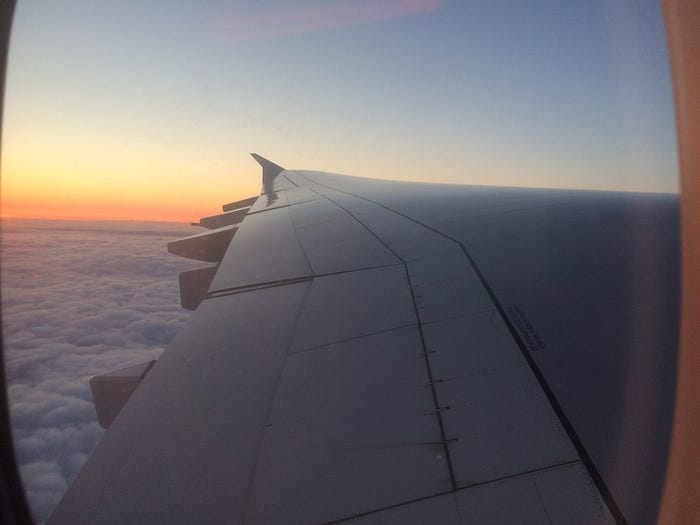The Airbus A380 wing is an astounding piece of engineering.

I fell in love with the port wing of an A380 while taking off from London. Despite my love for the profession and it’s outputs, I am rarely actually impressed by a piece of engineering but this was different.
Shorter than you might’ve thought but with a huge chord, the wing sprouts from the fuselage at an angle of maybe 15 degrees, extends out to the first engine then dips like a composite beam with untreated depression. The trailing edge is home to three dual element flaps, four tiny flaps on the end of the wing and a tasteful (and no doubt effective) winglet. More remarkably the leading edge of the wing also appears to actuate and, at takeoff, the wing has colossal quantities of camber and would, at first glance, appear to have the aerodynamic qualities of a railway bridge.
Not that it proves to be a problem. Four Rolls Royce Trent engines spin up, make a muffled roar, and in it’s own good time the aircraft and Newton become acquainted. Acceleration is delicate and concerning, speed gradually builds and some time in the next (seemingly) few minutes the tail finally dips and the wings come into their own.
This particular day was moist and cold, the conditions proving perfect for a textbook vortex to form from the leading edge and form over the wing a few feet from my window, creating a visible stream of the ensuing nightmare. Messers Navier and Stokes do their thing and a thick later of air is blasted over the top of the wing at an implausibly high speed, becoming turbulent maybe 2/3rds of the way to the trailing edge and making it (finally) painfully obvious that the angular momentum of the air is what is really doing the work.
The wing tip lifts, finally, pulling itself out of bed like an engineering student on a Sunday — and the wing starts to bend. Now, this is not bend like you might see on a 777 or sailing … no, as the plane takes off it becomes apparent that at this scale the wing is positively floppy, and lifts as if the aircraft were attached to a mattress. As we climb it continues to slop around, providing Mercedes like suspension for it’s passengers. The four tip flaps flick around, bird-like movements making it clear that evolution knows what it’s doing and we bank to the left.
In the setting sun we can finally see the eventual profile of the wing — counterintuitively convex for the furthest half, as we continue to climb into the sky. The flaps retract, slowly and noisily, and we head off into the sunset.
